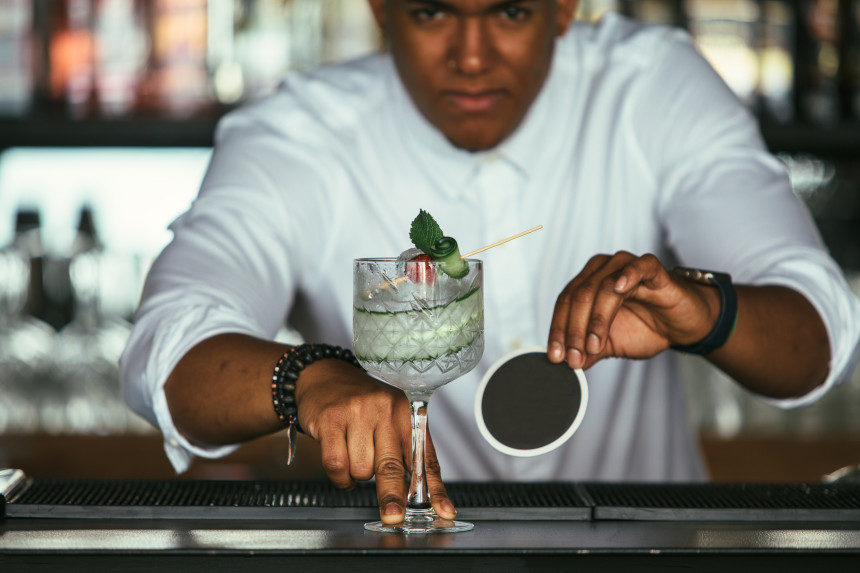Managing editor and logophile Andy Hollandbeck reveals the sometimes surprising roots of common English words and phrases. Remember: Etymology tells us where a word comes from, but not what it means today.
On Monday, comedian George Wallace wondered why coasters — those flat disks that keep the condensation from a cold beverage from damaging a wooden tabletop — are called coasters. “They don’t coast. Nothing coasts on them. They aren’t used specifically near the coast,” he tweeted, going on to suggest that whoever named coasters ought to be punished. Wallace, of course, had his mind on comedy, pointing out how odd and incongruous even some of the most basic English words can be once you really look at them.
Exactly what I try to do every week with this column.
The story of coaster is a wild ride through history that takes us to places we might not expect.
We begin with the Latin word costa, which originally meant “rib” (intercostal means “between the ribs”) but expanded to mean “side, flank.” This became the Old French coste with the same meaning, but it also began to appear in the phrase “coast of the sea,” likening the side of one’s body to the side of the land. It’s this meaning of coste that became the Middle English noun coast, meaning “seashore.”
About this time, we find our first coasters, but they had nothing to do with drinks; they were ships. Coasters would sail along the coast, coasting, as it were. (Navigation is much simplified when you can just keep the coastline to one side of the ship.) Coasters were often engaged in trading between two ports within the same country.

This idea of sailing around the edge of a land mass lent itself to more metaphorical uses. At dinner parties among the well-to-do, after the food was eaten and cleared and the servants were sent away, diners might stay at the table for some after-dinner conversation and some social drinking. This was facilitated by a bottle-coaster, a small, shallow tray (sometimes even on wheels) that held a decanter. The bottle-coaster was so named because it would be passed among the guests, making its way around the perimeter of the dinner table the way nautical coasters might make their way around an island.
The first modern coasters were created in the 19th century in the land of beer: Germany. Then, as today, a coaster was not only used under a mug, to protect the surface from moisture damage, but on top of it as well (if a beer stein didn’t have its own lid) to keep the bugs out. When this innovation found its way to English-speaking drinkers, they were recognizably similar to bottle-coasters but also used for glasses, cups, mugs, and (later) cans, and so they took the container-non-specific name coaster.
There’s one more type of coast to touch on, and that’s the verb. With French spelling innovations, the Old French coste became côte, which meant not only “coast” but “hillside” (now coteau). In 19th-century America, this latter type of coast was used to call out a snow-covered hill that was good for sledding. Sledding down such a hill came to be called coasting, which is where we got our modern verb to coast, meaning “to move solely by gravity and/or inertia.” Toward the end of the 19th century, creative builders were designing fun rides that mimicked coasting down snowy hills, only instead of sleds, people sat in cars that had rollers sitting on tracks, which allowed for higher speeds and year-round enjoyment. Originally called a switchback railroad (the first went a whopping 6 MPH), they eventually became known as roller coasters.
Bonus: A person who collects coasters and beermats is called a tegestologist, a word coined in 1960 from the Latin teges “covering, mat” and the common “study of” suffix -logy.
Featured image: (Click and Photo / Shutterstock)
Become a Saturday Evening Post member and enjoy unlimited access. Subscribe now



